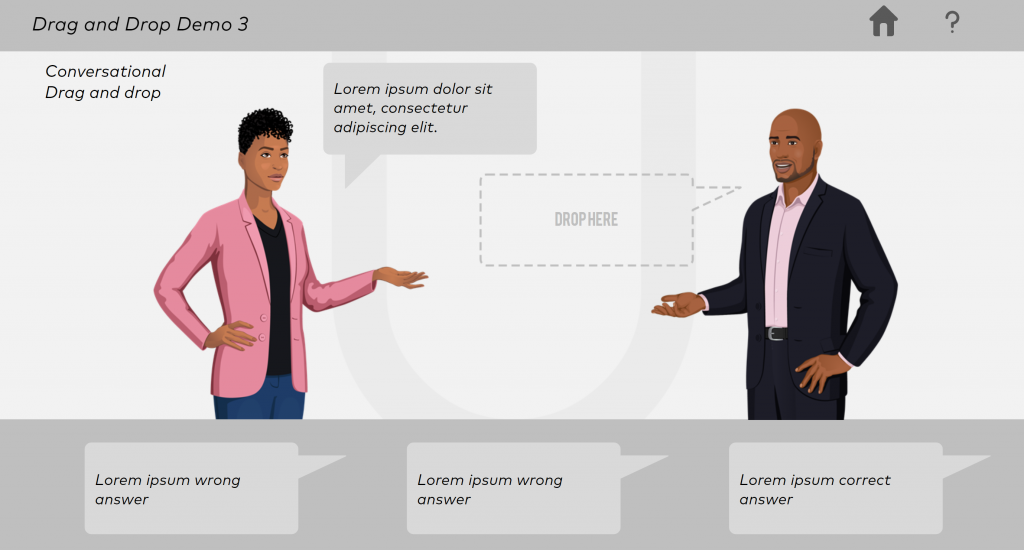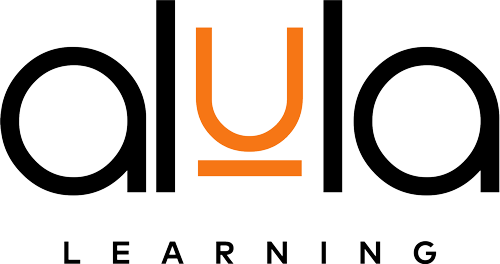Unlocking the Future of Learning via Live Learning Solutions
Did you know that the global e-learning market is projected to reach a staggering $336.98 billion by 2026? But here’s the game changer; the numbers are not just skyrocketing, it’s the way we’re learning – through Live Learning Solutions. You are either learning or churning out learning content! Facts about Live Learning Engagement: Live learning fuels a remarkable 56% surge in engagement compared to pre-recorded content. (Source: eLearning Industry Report) Real-time Connection: Learners actively participate and retain up to 65% more information during live sessions. It’s not just education; it’s an experience! (Source: Educational Psychology Journal) Reach: Break down geographical barriers with live sessions that connect learners from every corner of the world. (Source: Global Education Statistics Report) Imagine a Platform where you can turn your knowledge into revenue. Alula is more than a platform; it’s redefining learning by effortlessly blending knowledge-sharing with revenue. What Sets Alula Apart? Experience: Dive into an intuitive experience where you get to host your live courses seamlessly. Tracking: Alula’s analytics unveil your skill growth and accomplishments, guiding your journey to success. Tailored Growth: Alula’s model caters not only to your learners’ needs but also to your financial aspirations. It provides a comprehensive range of features, including inventory management of your payments and seamless onboarding processes, all designed to alleviate any associated stress. Stay ahead of the curve with Alula, where learning is an experience, and knowledge is power.
Virtual Reality: A Game Changer For eLearning.
Virtual reality (VR) technology has been around for a while, it has just recently been more widely available and more readily priced. This has created new possibilities for its application, particularly in the area of education. In actuality, virtual reality has been predicted to dominate e-learning and it looks like that’s already happening. What, then, makes virtual reality such a game-changer for online learning? Let’s look more closely. First of all, virtual reality makes learning immersive and engaging. Traditional e-learning platforms frequently only offer quizzes, videos, and text-based content. They can be useful, but they don’t always keep the student interested and encourage retention and understanding. With virtual reality, students are taken to a simulated setting that resembles real-world circumstances. A medical student, for instance, may utilize virtual reality to rehearse surgical operations, allowing them to simulate the appearance, sensation, and even noises of a real operation. Similar to this, a student of history may visit significant historical places or examine ancient ruins using virtual reality. Secondly, virtual reality can assist in lowering the expense and logistical challenges connected to conventional training. A lot of expensive tools, travel, and lodging are needed for in-person training. Using virtual reality, students may receive training at any time, from any location, and without the expense of specialized technology. This makes it a great choice for those who work remotely, have mobility concerns, or can’t afford to travel for training. Thirdly, virtual reality can be tailored to each learner’s specific requirements. Everyone receives the same resources and complies to the same curriculum in a traditional classroom or online learning setting. Yet with virtual reality, learners can interact with the setting in a way that fits their particular learning preferences. They can decide whether to spend more time on specific topics or move on if they are familiar with them. Finally, virtual reality can give learners a safer setting in which to practice and study. For instance, a Police officer may utilize virtual reality to practice a risky rescue operation without endangering themselves or anybody else. Similar to how a construction worker could practice operating heavy equipment in a secure setting. In conclusion, virtual reality is poised to transform how we educate ourselves. It lowers logistical obstacles, can be tailored to meet specific learning needs, and gives a safer learning environment. It also delivers a more interesting and dynamic learning experience. If you would like to learn more about how to incorporate eLearning courses in your organization, contact us at [email protected] and we will respond to you. Ayanfejesu Famubode Digital Communications Officer Alula Learning
Supporting Remote Work With Your LMS

I speak with people from different lines of work and they have a different conception of what a learning management system is and what exactly it does and how it can help the remote work style. Well, your number 1 eLearning evangelist is, here again, to make it easy to understand. Firstly, what is an LMS? According to share knowledge “A learning management system is a software application that provides the framework that handles all aspects of the learning process – it’s where you house, deliver, and track your training content.” Another definition by Tech Target says “A learning management system (LMS) is a software application or web-based technology used to plan, implement and assess a specific learning process. It is used for eLearning.” From the two definitions above, one thing is constant and that is it’s a platform used for LEARNING. Working from home can be beneficial for employees and businesses alike, especially during emergency situations. Companies can continue serving their clients while keeping their team members safe, and workers can enjoy greater flexibility. However, there are some challenges remote work comes with, they are: Lack of personal motivation Time management troubles Communication difficulties Loneliness (especially for those that live alone). As someone that loves to engage with people, working from home took a toll on me especially when it seems like “work isn’t going well”. Here are things you can do with your LMS to improve some of these challenges in your organization: Collaboration: An LMS can provide opportunities for interaction on forums or in company-wide activities. For example, a company can use an LMS as a culture-building tool and frequently provide company-wide initiatives that are managed through the LMS. In this way, the LMS can ensure that employees still enjoy human interaction and connection with their colleagues while working from home. Convenient contact: Thanks to online, cloud-based training solutions, reaching groups of employees and individual team members is easy for L&D managers on the LMS. Whether this means giving more group assignments or more forum discussions, encouraging video conferencing sessions or providing interactive training materials, the platform is accessible anytime and anywhere. Team-strengthening activities: Many businesses organize group training sessions. The opportunity to socialize and learn with other people can have an excellent impact on employee satisfaction and productivity. These sessions also provide a chance for employees to realign their daily activities with the company mission. Engaging professional support: Personalized, relevant training activities via the LMS often provide more tangible, engaging, and measurably successful learning experiences. The ensuing boost in skills or knowledge is often accompanied by a mirrored boost in morale, confidence and performance, motivating employees with professional development that supports their success. Tracking and reporting: L&D managers to monitor the ongoing needs of employees. LMS platforms offer significant flexibility for course design so professionals can create tailored instruction for emergency situations. With an LMS, you can address time-sensitive issues and provide helpful guidance that makes a difference precisely when it is needed. Maximizing your LMS while working remotely is not easy work and I know. Here are a few tips to make your work lighter. Use audio-visual communication tools where possible: Chat messages are fast and easy to send, but they can also lead to mistakes and misunderstandings when working remotely. Take advantage of LMS features for video, audio recordings, or other media plugins and tools to relay messages quickly and easily. Encourage healthy competition: One way to keep people motivated is by incorporating gamified content into your learning strategy. For example, grouping individuals into various teams can provide a sense of camaraderie and help employees engage with one another. Using badges, points, or leader boards to recognize achievement can help employees maintain their forward momentum by inspiring self-motivation as well as some friendly competition with colleagues. Confirm attentiveness: Another helpful feature of LMS software is the ability to check that team members are engaging with your training content. Organizations can collect both formal and informal learning data through their LMS in order to track and report on the effectiveness of their L&D programs. Track progress: For eLearning and remote projects, administrators need to stay on top of employee progress. This is more beneficial to you than the learners so you can see how well you’re doing. In summary, you can do more than just upload courses and assessments on your LMS. Get comfortable with using it informally for discussions, instant messaging tools. Add game features to it like leader boards and badges for motivation and watch how people enjoy using the platform. As L&D managers or learning administrators, we should also enjoy good things when we put in such amazing work. If you start seeing positive results don’t hesitate to pour yourself a drink and cheer to health and productivity. If your LMS doesn’t have some of the features and strategies I wrote above feel free to send me an email and we can talk about how to upgrade your LMS to make it more interactive and more useful to your organization. If you don’t have an LMS, kindly send an email to [email protected] and we will respond to you.
Drag and Drop Storyline Template

Drag and drop interactions can give an interesting dynamic to your eLearning content and can be used to help increase learner engagement and improve retention of information through interaction with the screen. Here are three (3) free, interactive and easy-to-customize drag and drop interactions. Conversational drag and drop: This is a good way to do scenario-based testing. Drag into a box: This is a regular type drag and drop. Very good for knowledge checks. Cycle drag and drop: This is a good way to do a step by step knowledge check Click HERE to interact with the demo. You can download this template for free HERE There you have it. If you want to learn more about designing interactive eLearning activities kindly send an email to [email protected] or send me a personal email at [email protected] to discuss how I can create interactive and engaging eLearning.
